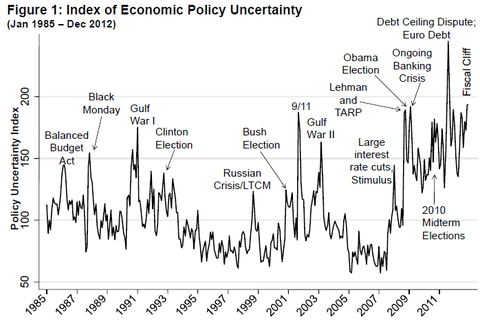But her abortion rights advocacy and her pink sneakers might have never gained national attention had she been in a state without a reliable live stream of the Legislature. Ms. Davis’s 11-hour filibuster inadvertently illuminated the stark technological differences that exist from state to state when it comes to broadcasting the public’s business.
In nearly a dozen states, there is no live video of legislative proceedings, only audio; in some other states that purport to provide video, the Web streams barely work. Even the audio, though, is of value to reporters, activists and ordinary citizens.
As journalism organizations continue to cut back on the number of reporters stationed at statehouses across the country, state-level equivalents to C-Span on television and online are supplying new ways to bear witness to the machinations of state and local government.
Some of Ms. Davis’s supporters and detractors will surely be watching on Monday when the Texas Legislature reconvenes and takes up the bill again. In Texas last week, The Texas Tribune made up for the state Senate’s digital shortcomings. Months before Ms. Davis’s vivid protest, the nonprofit news organization, based a few blocks from the state Capitol building in Austin, had gained access to the stream provided by state-controlled cameras there and set up a live YouTube channel for the legislative session.
While the same stream was also accessible through the Senate’s own Web site, that site looked almost comically old-fashioned compared with YouTube. Thus it was through YouTube that Ms. Davis’s filibuster was widely seen and shared.
“It’s great to see a channel like The Texas Tribune using YouTube to take a local story national — and probably won’t be the only time we’ll see this happen,” said Kevin Allocca, a trends manager at YouTube.
Online videos have been going viral for almost a decade, but what came out of the filibuster in Texas was something distinct: viral live video. Whether from a statehouse balcony or an activist’s smartphone, scenes that were once edited and distilled for television are increasingly being streamed live to an audience that spreads the news, or at least the pictures, themselves.
Streams from independent journalists at Occupy Wall Street protests in 2011 sometimes drew tens of thousands of viewers. More recently, links to live streaming video of mass protests in Turkey, Brazil and, as late as Sunday, Egypt, have been popular on social networks like Facebook and Twitter.
When the Texas Senate stream on YouTube peaked in popularity shortly after midnight Wednesday, as the end of the legislative session dissolved into chaos, 182,000 people were tuned in, about the same number watching MSNBC, one of the cable news channels that was mercilessly criticized for not broadcasting the Texas debate live.
People didn’t necessarily need MSNBC, though, because they had YouTube.
The theatrical aspects of Ms. Davis’s filibuster and the seriousness of what was at stake “all resulted in people saying to their friends, ‘You have to look at this!’ ” said Andrew Lih, a professor of journalism and director of new media at the University of Southern California Annenberg School of Communication and Journalism.
Many, probably most, of the online viewers wanted to see the Senate bill fail. They organized around Twitter hashtags like #StandWithWendy. But some anti-abortion campaigners followed the filibuster too, along with the politically minded who simply enjoyed watching what The Dallas Morning News called a “knife-fight within the confines of Robert’s Rules of Order.”
The heavy online viewership helped to prompt television networks and other news outlets to follow up the next morning and subsequently. On “Meet the Press” on Sunday, Ms. Davis said she and other state Democrats would keep battling against the abortion bill and said even if it passes, as many analysts expect, “obviously there will be challenges to it going forward.”
Thanks to the heightened interest in the bill, The Texas Tribune Web site had “far and away the highest traffic day in our history,” said Evan Smith, its editor in chief. Visitors have pledged about $37,000 to the nonprofit organization, from a total of 37 states, reflecting the nationwide scope of the sudden attention.
Mr. Lih said that The Tribune had done something significant “by getting the Senate video, which existed already, into a portal where the people hang out,” that is, YouTube. “That is pretty simple but powerful,” he said. (The Texas Tribune has a partnership with The New York Times to provide expanded coverage of the state.)
Data from the National Conference of State Legislatures indicates that all 50 states stream live audio of floor proceedings. Most also stream video, but the quality and accessibility varies widely. In some states, lack of funds has caused hardware and software upgrades to be postponed.
In Texas and in most other states the productions are handled in-house, raising concerns about potential interference. (At several points during the abortion bill debate last Tuesday, the stream was muted while private discussions took place, much to the consternation of viewers who were unaware that this was standard procedure.)
But in eight states, there are nonprofit groups that produce gavel-to-gavel coverage of all three state branches of government, according to Paul Giguere, the head of the Connecticut Public Affairs Network and a national association of ones like it.
“Ordinary citizens have an inherent right to watch their state government in action if they choose to,” Mr. Giguere said.
His association is piecing together a national strategy with the hope that it can convert more states to a more independent model. “We can’t replace reporters. What reporters do is critical,” he said. “But we can be a primary source.”

Article source: http://www.nytimes.com/2013/07/01/business/media/from-texas-statehouse-to-youtube-a-filibuster-is-a-hit.html?partner=rss&emc=rss


